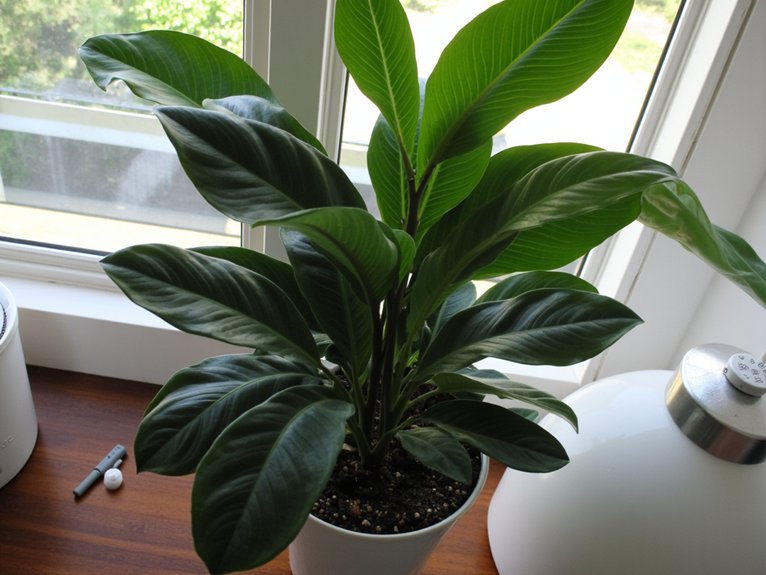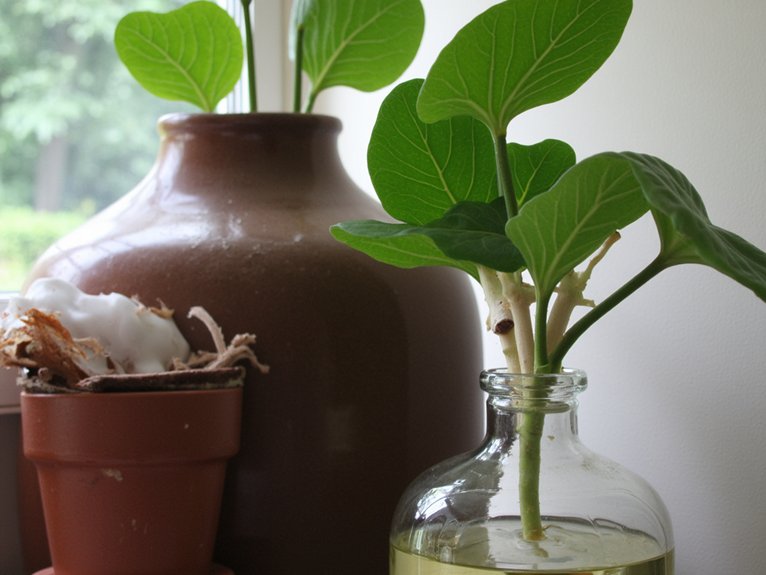The journey to becoming a fiddle leaf fig master can feel like scaling Mount Everest without proper guidance. Plant care expert Sarah Thompson notes, “These finicky tropical plants demand specific conditions, but they’ll reward dedicated owners with stunning foliage.” Every fiddle leaf fig owner must navigate vital elements like proper light exposure, watering schedules, and humidity levels to achieve success. The following thorough guide breaks down essential care requirements that transform struggling plants into thriving specimens.
Contents
Understanding Your Fiddle Leaf Fig’s Basic Needs

While Fiddle Leaf Figs have earned a reputation for being finicky houseplants, understanding their basic needs will set you up for success. These stunning West African natives showcase distinctive leaf characteristics, with large, violin-shaped leaves that can grow up to 18 inches long and 12 inches wide.
Their natural light adaptation stems from their rainforest habitat, requiring bright indirect light to thrive. “The key is gradual acclimation,” says botanist Dr. Sarah Chen. “Position your plant near a south or east-facing window, and slowly adjust its placement until you find the sweet spot where leaves look perky and maintain their deep green color.”
Creating the Perfect Growing Environment
Since Fiddle Leaf Figs thrive in specific conditions that mirror their tropical origins, creating an ideal growing environment requires careful attention to temperature, humidity, and soil composition.
The perfect setup includes bright indirect light conditions, ideally near south or east-facing windows. Keep temperatures between 60-75°F and maintain humidity levels at 40-60% using a humidifier or pebble tray. The soil should be well-draining, combining high-quality potting mix with perlite for aeration.
“Most indoor growing issues stem from improper environmental conditions,” notes botanist Dr. Sarah Chen. “Focus on consistent temperature, adequate humidity, and proper light exposure for success.”
Essential Watering and Soil Requirements

Because proper watering and soil composition form the foundation of healthy Fiddle Leaf Fig growth, mastering these basics is essential for success. The ideal soil composition combines high-quality potting mix with perlite for superior drainage, while peat moss or coconut coir helps retain necessary moisture.
Watch the soil moisture carefully – water only when the top inch feels dry. The watering frequency will vary based on environmental conditions, but most plants need thorough watering every 7-10 days. Use filtered or distilled water to prevent mineral buildup, and always guarantee excess water drains completely to avoid root rot.
Feeding and Troubleshooting Your Plant
Beyond proper soil and watering, your Fiddle Leaf Fig needs regular nutrients to thrive indoors. During spring and summer, apply a balanced houseplant fertilizer every 30 days for six months. Choose between liquid fertilizers for easy application or slow-release options for convenience.
Watch for common leaf issues that signal problems. Brown edges typically mean underwatering or low humidity, while drooping leaves indicate improper moisture levels. If leaves start dropping, check for temperature fluctuations or irregular watering patterns. Remove damaged leaves promptly and wipe healthy ones monthly to prevent dust buildup and maintain ideal growth.
Successfully Propagating and Repotting

Growing new Fiddle Leaf Figs requires stem cuttings rather than individual leaves, as leaf propagation won’t produce a full tree. For successful propagation techniques, select semi-lignified cuttings and cut just below the last node. Remove leaves from the bottom nodes, dip in rooting hormone, and plant in a perlite-coconut coir mix.
When it comes to repotting essentials, these plants need fresh soil every 3-4 years. Watch for signs like drooping leaves or roots emerging from drainage holes. Choose a pot two sizes larger, loosen tangled roots, and remove old soil. Water immediately after repotting to minimize shock.
